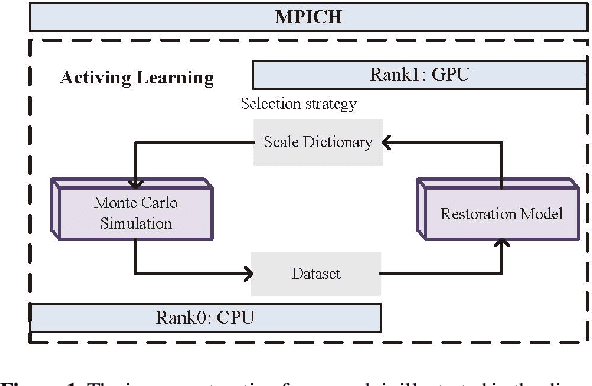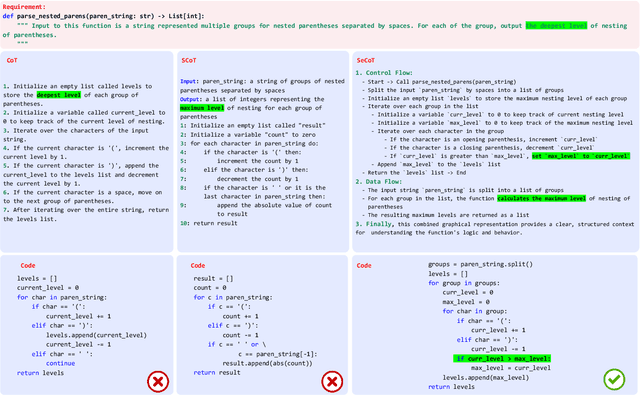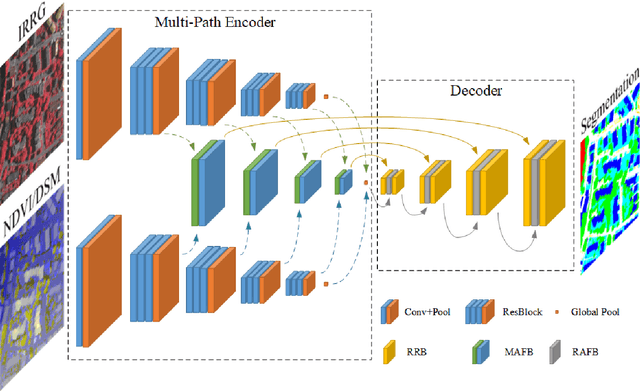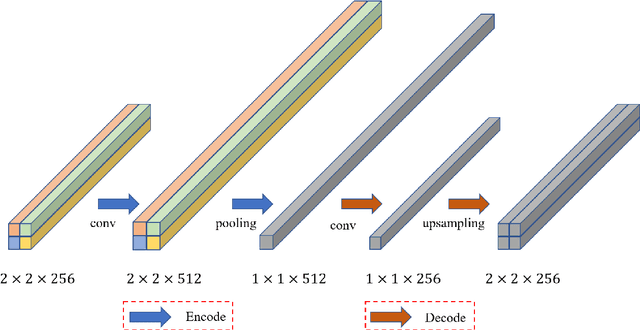Shanshan Li
ChiseLLM: Unleashing the Power of Reasoning LLMs for Chisel Agile Hardware Development
Apr 27, 2025Abstract:The growing demand for Domain-Specific Architecture (DSA) has driven the development of Agile Hardware Development Methodology (AHDM). Hardware Construction Language (HCL) like Chisel offers high-level abstraction features, making it an ideal language for HCL-Based AHDM. While Large Language Models (LLMs) excel in code generation tasks, they still face challenges with Chisel generation, particularly regarding syntax correctness and design variability. Recent reasoning models have significantly enhanced code generation capabilities through test-time scaling techniques. However, we found that reasoning models without domain adaptation cannot bring substantial benefits to Chisel code generation tasks. This paper presents ChiseLLM, a solution comprising data processing and transformation, prompt-guided reasoning trace synthesis, and domain-adapted model training. We constructed high-quality datasets from public RTL code resources and guided the model to adopt structured thinking patterns through prompt enhancement methods. Experiments demonstrate that our ChiseLLM-7B and ChiseLLM-32B models improved syntax correctness by 18.85% and 26.32% respectively over base models, while increasing variability design ability by 47.58% compared to baseline reasoning models. Our datasets and models are publicly available, providing high-performance, cost-effective models for HCL-Based AHDM, and offering an effective baseline for future research. Github repository: https://github.com/observerw/ChiseLLM
Unseen Horizons: Unveiling the Real Capability of LLM Code Generation Beyond the Familiar
Dec 11, 2024Abstract:Recently, large language models (LLMs) have shown strong potential in code generation tasks. However, there are still gaps before they can be fully applied in actual software development processes. Accurately assessing the code generation capabilities of large language models has become an important basis for evaluating and improving the models. Some existing works have constructed datasets to evaluate the capabilities of these models. However, the current evaluation process may encounter the illusion of "Specialist in Familiarity", primarily due to three gaps: the exposure of target code, case timeliness, and dependency availability. The fundamental reason for these gaps is that the code in current datasets may have been extensively exposed and exercised during the training phase, and due to the continuous training and development of LLM, their timeliness has been severely compromised. The key to solve the problem is to, as much as possible, evaluate the LLMs using code that they have not encountered before. Thus, the fundamental idea in this paper is to draw on the concept of code obfuscation, changing code at different levels while ensuring the functionality and output. To this end, we build a code-obfuscation based benchmark OBFUSEVAL. We first collect 1,354 raw cases from five real-world projects, including function description and code. Then we use three-level strategy (symbol, structure and semantic) to obfuscate descriptions, code and context dependencies. We evaluate four LLMs on OBFU- SEVAL and compared the effectiveness of different obfuscation strategy. We use official test suites of these projects to evaluate the generated code. The results show that after obfuscation, the average decrease ratio of test pass rate can up to 62.5%.
SPT: Spectral Transformer for Red Giant Stars Age and Mass Estimation
Jan 10, 2024Abstract:The age and mass of red giants are essential for understanding the structure and evolution of the Milky Way. Traditional isochrone methods for these estimations are inherently limited due to overlapping isochrones in the Hertzsprung-Russell diagram, while asteroseismology, though more precise, requires high-precision, long-term observations. In response to these challenges, we developed a novel framework, Spectral Transformer (SPT), to predict the age and mass of red giants aligned with asteroseismology from their spectra. A key component of SPT, the Multi-head Hadamard Self-Attention mechanism, designed specifically for spectra, can capture complex relationships across different wavelength. Further, we introduced a Mahalanobis distance-based loss function to address scale imbalance and interaction mode loss, and incorporated Monte Carlo dropout for quantitative analysis of prediction uncertainty.Trained and tested on 3,880 red giant spectra from LAMOST, the SPT achieved remarkable age and mass estimations with average percentage errors of 17.64% and 6.61%, respectively, and provided uncertainties for each corresponding prediction. The results significantly outperform those of traditional machine learning algorithms and demonstrate a high level of consistency with asteroseismology methods and isochrone fitting techniques. In the future, our work will leverage datasets from the Chinese Space Station Telescope and the Large Synoptic Survey Telescope to enhance the precision of the model and broaden its applicability in the field of astronomy and astrophysics.
Image Restoration with Point Spread Function Regularization and Active Learning
Oct 31, 2023



Abstract:Large-scale astronomical surveys can capture numerous images of celestial objects, including galaxies and nebulae. Analysing and processing these images can reveal intricate internal structures of these objects, allowing researchers to conduct comprehensive studies on their morphology, evolution, and physical properties. However, varying noise levels and point spread functions can hamper the accuracy and efficiency of information extraction from these images. To mitigate these effects, we propose a novel image restoration algorithm that connects a deep learning-based restoration algorithm with a high-fidelity telescope simulator. During the training stage, the simulator generates images with different levels of blur and noise to train the neural network based on the quality of restored images. After training, the neural network can directly restore images obtained by the telescope, as represented by the simulator. We have tested the algorithm using real and simulated observation data and have found that it effectively enhances fine structures in blurry images and increases the quality of observation images. This algorithm can be applied to large-scale sky survey data, such as data obtained by LSST, Euclid, and CSST, to further improve the accuracy and efficiency of information extraction, promoting advances in the field of astronomical research.
Bridging Code Semantic and LLMs: Semantic Chain-of-Thought Prompting for Code Generation
Oct 22, 2023



Abstract:Large language models (LLMs) have showcased remarkable prowess in code generation. However, automated code generation is still challenging since it requires a high-level semantic mapping between natural language requirements and codes. Most existing LLMs-based approaches for code generation rely on decoder-only causal language models often treate codes merely as plain text tokens, i.e., feeding the requirements as a prompt input, and outputing code as flat sequence of tokens, potentially missing the rich semantic features inherent in source code. To bridge this gap, this paper proposes the "Semantic Chain-of-Thought" approach to intruduce semantic information of code, named SeCoT. Our motivation is that the semantic information of the source code (\eg data flow and control flow) describes more precise program execution behavior, intention and function. By guiding LLM consider and integrate semantic information, we can achieve a more granular understanding and representation of code, enhancing code generation accuracy. Meanwhile, while traditional techniques leveraging such semantic information require complex static or dynamic code analysis to obtain features such as data flow and control flow, SeCoT demonstrates that this process can be fully automated via the intrinsic capabilities of LLMs (i.e., in-context learning), while being generalizable and applicable to challenging domains. While SeCoT can be applied with different LLMs, this paper focuses on the powerful GPT-style models: ChatGPT(close-source model) and WizardCoder(open-source model). The experimental study on three popular DL benchmarks (i.e., HumanEval, HumanEval-ET and MBPP) shows that SeCoT can achieves state-of-the-art performance, greatly improving the potential for large models and code generation.
At Which Training Stage Does Code Data Help LLMs Reasoning?
Sep 30, 2023



Abstract:Large Language Models (LLMs) have exhibited remarkable reasoning capabilities and become the foundation of language technologies. Inspired by the great success of code data in training LLMs, we naturally wonder at which training stage introducing code data can really help LLMs reasoning. To this end, this paper systematically explores the impact of code data on LLMs at different stages. Concretely, we introduce the code data at the pre-training stage, instruction-tuning stage, and both of them, respectively. Then, the reasoning capability of LLMs is comprehensively and fairly evaluated via six reasoning tasks in five domains. We critically analyze the experimental results and provide conclusions with insights. First, pre-training LLMs with the mixture of code and text can significantly enhance LLMs' general reasoning capability almost without negative transfer on other tasks. Besides, at the instruction-tuning stage, code data endows LLMs the task-specific reasoning capability. Moreover, the dynamic mixing strategy of code and text data assists LLMs to learn reasoning capability step-by-step during training. These insights deepen the understanding of LLMs regarding reasoning ability for their application, such as scientific question answering, legal support, etc. The source code and model parameters are released at the link:~\url{https://github.com/yingweima2022/CodeLLM}.
One Adapter for All Programming Languages? Adapter Tuning for Code Search and Summarization
Mar 28, 2023Abstract:As pre-trained models automate many code intelligence tasks, a widely used paradigm is to fine-tune a model on the task dataset for each programming language. A recent study reported that multilingual fine-tuning benefits a range of tasks and models. However, we find that multilingual fine-tuning leads to performance degradation on recent models UniXcoder and CodeT5. To alleviate the potentially catastrophic forgetting issue in multilingual models, we fix all pre-trained model parameters, insert the parameter-efficient structure adapter, and fine-tune it. Updating only 0.6\% of the overall parameters compared to full-model fine-tuning for each programming language, adapter tuning yields consistent improvements on code search and summarization tasks, achieving state-of-the-art results. In addition, we experimentally show its effectiveness in cross-lingual and low-resource scenarios. Multilingual fine-tuning with 200 samples per programming language approaches the results fine-tuned with the entire dataset on code summarization. Our experiments on three probing tasks show that adapter tuning significantly outperforms full-model fine-tuning and effectively overcomes catastrophic forgetting.
ProxyFormer: Proxy Alignment Assisted Point Cloud Completion with Missing Part Sensitive Transformer
Feb 28, 2023Abstract:Problems such as equipment defects or limited viewpoints will lead the captured point clouds to be incomplete. Therefore, recovering the complete point clouds from the partial ones plays an vital role in many practical tasks, and one of the keys lies in the prediction of the missing part. In this paper, we propose a novel point cloud completion approach namely ProxyFormer that divides point clouds into existing (input) and missing (to be predicted) parts and each part communicates information through its proxies. Specifically, we fuse information into point proxy via feature and position extractor, and generate features for missing point proxies from the features of existing point proxies. Then, in order to better perceive the position of missing points, we design a missing part sensitive transformer, which converts random normal distribution into reasonable position information, and uses proxy alignment to refine the missing proxies. It makes the predicted point proxies more sensitive to the features and positions of the missing part, and thus make these proxies more suitable for subsequent coarse-to-fine processes. Experimental results show that our method outperforms state-of-the-art completion networks on several benchmark datasets and has the fastest inference speed. Code is available at https://github.com/I2-Multimedia-Lab/ProxyFormer.
Bridging Pre-trained Models and Downstream Tasks for Source Code Understanding
Dec 04, 2021



Abstract:With the great success of pre-trained models, the pretrain-then-finetune paradigm has been widely adopted on downstream tasks for source code understanding. However, compared to costly training a large-scale model from scratch, how to effectively adapt pre-trained models to a new task has not been fully explored. In this paper, we propose an approach to bridge pre-trained models and code-related tasks. We exploit semantic-preserving transformation to enrich downstream data diversity, and help pre-trained models learn semantic features invariant to these semantically equivalent transformations. Further, we introduce curriculum learning to organize the transformed data in an easy-to-hard manner to fine-tune existing pre-trained models. We apply our approach to a range of pre-trained models, and they significantly outperform the state-of-the-art models on tasks for source code understanding, such as algorithm classification, code clone detection, and code search. Our experiments even show that without heavy pre-training on code data, natural language pre-trained model RoBERTa fine-tuned with our lightweight approach could outperform or rival existing code pre-trained models fine-tuned on the above tasks, such as CodeBERT and GraphCodeBERT. This finding suggests that there is still much room for improvement in code pre-trained models.
An Attention-Fused Network for Semantic Segmentation of Very-High-Resolution Remote Sensing Imagery
May 28, 2021



Abstract:Semantic segmentation is an essential part of deep learning. In recent years, with the development of remote sensing big data, semantic segmentation has been increasingly used in remote sensing. Deep convolutional neural networks (DCNNs) face the challenge of feature fusion: very-high-resolution remote sensing image multisource data fusion can increase the network's learnable information, which is conducive to correctly classifying target objects by DCNNs; simultaneously, the fusion of high-level abstract features and low-level spatial features can improve the classification accuracy at the border between target objects. In this paper, we propose a multipath encoder structure to extract features of multipath inputs, a multipath attention-fused block module to fuse multipath features, and a refinement attention-fused block module to fuse high-level abstract features and low-level spatial features. Furthermore, we propose a novel convolutional neural network architecture, named attention-fused network (AFNet). Based on our AFNet, we achieve state-of-the-art performance with an overall accuracy of 91.7% and a mean F1 score of 90.96% on the ISPRS Vaihingen 2D dataset and an overall accuracy of 92.1% and a mean F1 score of 93.44% on the ISPRS Potsdam 2D dataset.
* 35 pages. Published by ISPRS Journal of Photogrammetry and Remote Sensing
 Add to Chrome
Add to Chrome Add to Firefox
Add to Firefox Add to Edge
Add to Edge